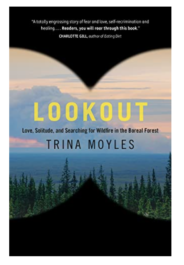The British Columbia Wildfire Service recently welcomed a group of 60 IMT members and specialized personnel from Australia and New Zealand to assist throughout the province. Another 30 went to Alberta.
The firefighters arrived in Canada as part of a years-long partnership through the Canadian Interagency Forest Fire Centre (CIFFC).
“The relationship between the B.C. Wildfire Service and Australia is longstanding, extending more than 15 years of mutual aid, support, and knowledge transfer,” they said. “The first instances of support started during the 2007 wildfire season in Australia, when B.C. assisted by sending more than 60 personnel to support fire suppression efforts.”

assignments. ~BC Wildfire Service
CIFFC is a not-for-profit group operated by Canadian wildland fire management partners and shares resources and mutual aid throughout the nation and internationally using the Canadian Interagency Mutual Aid Resource Sharing (MARS) Agreement — and the Australasian Fire and Emergency Service Authorities Council during wildfire seasons. CIFFC has a similar agreement with the U.S.
During the catastrophic 2021 season in British Columbia, the B.C. Wildfire Service was able to rely on these arrangements to request support from other Canadian provinces, the federal government, Mexico and Australia. CIFFC supports this coordination of resources.
Fire officials attribute the strong relationship between the nations to a shared understanding of how to approach emergency management.
“The agencies operate similarly in terms of warning systems, collaboration, and information sharing. We share a lot in common when it comes to fire behavior as well. Large bushfires and wildfires that can cause significant impact to close-by communities and property, hot dry and windy conditions, and fires with ability to grow quickly are not uncommon for the two nations.”
Nine of the 90 total firefighters came from the South Australian Country Fire Service (CFS), according to the South Australian government; the deployment could last up to 40 days.
“I feel humbled and honored to have this opportunity to travel to Canada to support their firefighters in a time of need and to deploy the skills I have learned over the years and to learn some new ones,” CFS Divisional Commander Phil Tapscott said. “These opportunities always reaffirm that what we do here in the CFS is of a very high quality.”
Around 883 wildfires have burned in British Columbia since the beginning of the year, according to the BC Wildfire Service list. Of those, 349 are still burning and 211 are considered out of control; 16 evacuation orders in 2024 have been issued.
Alberta has recorded 927 wildfires this year, 161 of which are labeled “active” and 53 of which are “out of control,” according to the province’s wildfire status dashboard.







 strong intergovernmental agreement known as the Northwest Compact allows Alaska and other states and provinces to request or share resurces internationally.
strong intergovernmental agreement known as the Northwest Compact allows Alaska and other states and provinces to request or share resurces internationally.






